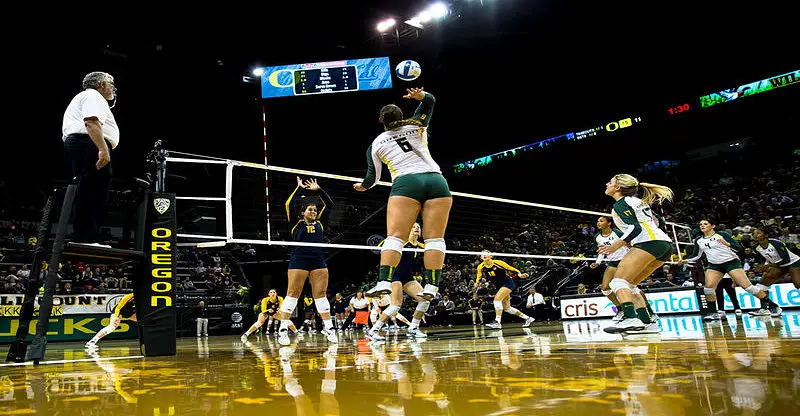How to Read the Hitter in Volleyball Every Time
There’s no doubting that the nature of volleyball means that it is a very quick game where you are given just a fraction of a second to make the right decision when the ball comes your way.
Imagine knowing what a hitter is going to do, perhaps even before he or she knows what they are going to do based on their tendencies and other clues you can pick up before the ball is hit. This ensures that when the ball comes your way you can plan accordingly what you are going to do to maximize the chance of winning the point for your team.
If this sounds too good to be true; well, it really isn’t. All it takes is knowing what to look out for so you can get into the right place at the right time, making the opposition’s hitter think you are some kind of oracle. Okay, maybe we went a little too far there, but by following these tips you can make sure that you can predict what will happen more times than not.
How to Read the Hitter
It All Begins With the Warm-Up
There is no better time to learn an opposing player’s tendencies than in the warm-up before the match actually begins. If you leave it until the match begins before you make mental notes of a player’s tendencies then you will find that your success rate decreases, as there are just too many other things on your mind and other things that you need to keep track of to find success.
So what questions should you ask yourself before the warm-up?
- Is the player quick or slow?
- Is the player tall or short?
- What are the player’s strengths and weaknesses (vertical jump, weak side, agility etc.)?
- How can I exploit these strengths and weaknesses?
Once you have answered these questions and have gained some valuable insight into how the player plays the game, it is time to start formulating a plan on how you can take advantage of all this information.
Also don’t be afraid to ask your teammates and coach and to compare notes – volleyball is a team game after all, and one in which your own success directly depends upon the success of your teammates.
Questions to Ask In-Game
While the best thing you can do is to scout the opponent before the game by watching a video of how they play, attending one of their matches, or even asking others who have played against the hitter, we realize that this isn’t always possible. Therefore, in-game is the time to ask yourself the following questions:
- What is the player’s favorite shot?
- Does the player rely on pure power or finesse?
- In which situations does the player like to swing hard at the ball?
2 Other Clues That Can Help You Read the Hitter
Look at the Shoulder
One of the best and easiest ways to read the hitter is by looking at their hitting shoulder. The position of the shoulder gives a lot away in volleyball and it is hard to disguise a player’s intentions once you know what to look out for.
You should be looking at the position of the ball in relation to the player’s shoulder. For example, the shoulder position can tell you whether the hitter has no choice other than to go cross-court, or is in a position that allows the ball to be hit anywhere they would like.
Look at the Eyes
They say that the eyes are the gateway to the soul, and in volleyball the eyes give away a lot more information than a player would like to be given away. As you play volleyball at the higher levels, you will encounter many players who have mastered the no-look attack, but for now the hitter’s eyes can really help you decipher what is going to happen.
For example, as the ball is in the air and before it reaches the hitter you will often find that the player has a quick look at the other side of the court to see which areas are open and deicde upon where the ball can be hit to maximize the chance of winning the point. Take advantage of this by heading to the area where you think the ball is going to be hit.
However, try and wait for as long as possible to do this so the opposing hitter is not given enough time and is therefore unable to change their decision.

